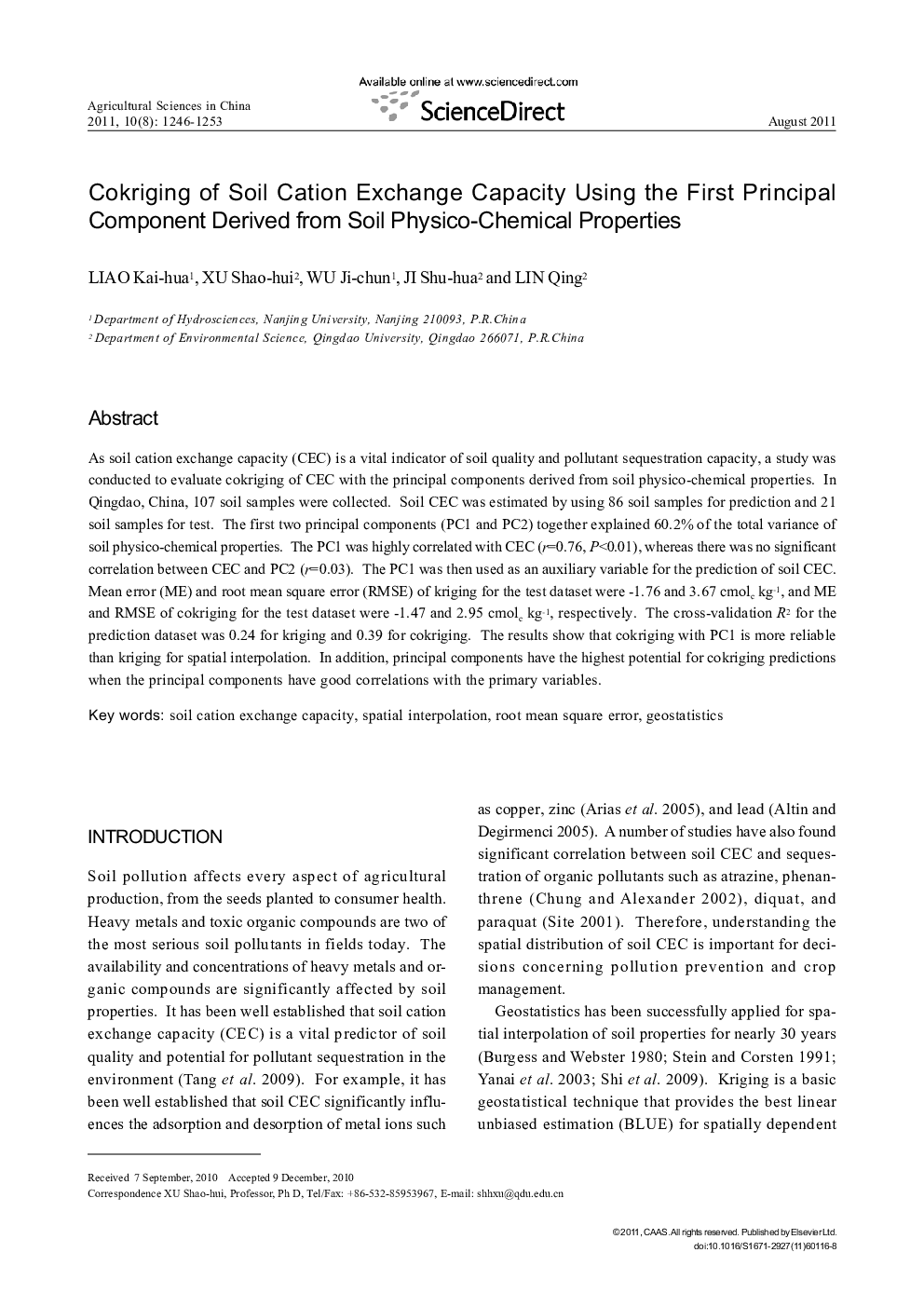| کد مقاله | کد نشریه | سال انتشار | مقاله انگلیسی | نسخه تمام متن |
|---|---|---|---|---|
| 4489969 | 1317746 | 2011 | 8 صفحه PDF | دانلود رایگان |

As soil cation exchange capacity (CEC) is a vital indicator of soil quality and pollutant sequestration capacity, a study was conducted to evaluate cokriging of CEC with the principal components derived from soil physico-chemical properties. In Qingdao, China, 107 soil samples were collected. Soil CEC was estimated by using 86 soil samples for prediction and 21 soil samples for test. The first two principal components (PC1 and PC2) together explained 60.2% of the total variance of soil physico-chemical properties. The PC1 was highly correlated with CEC (r=0.76, P<0.01), whereas there was no significant correlation between CEC and PC2 (r=0.03). The PC1 was then used as an auxiliary variable for the prediction of soil CEC. Mean error (ME) and root mean square error (RMSE) of kriging for the test dataset were −1.76 and 3.67 cmolc kg−1, and ME and RMSE of cokriging for the test dataset were −1.47 and 2.95 cmolc kg−1, respectively. The cross-validation R2 for the prediction dataset was 0.24 for kriging and 0.39 for cokriging. The results show that cokriging with PC1 is more reliable than kriging for spatial interpolation. In addition, principal components have the highest potential for cokriging predictions when the principal components have good correlations with the primary variables.
Journal: Agricultural Sciences in China - Volume 10, Issue 8, August 2011, Pages 1246-1253